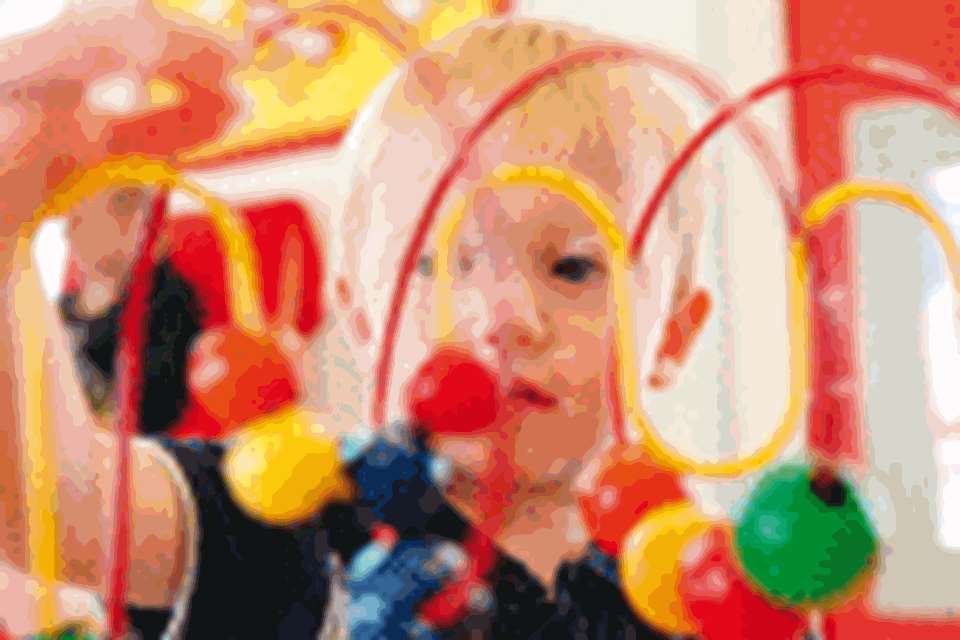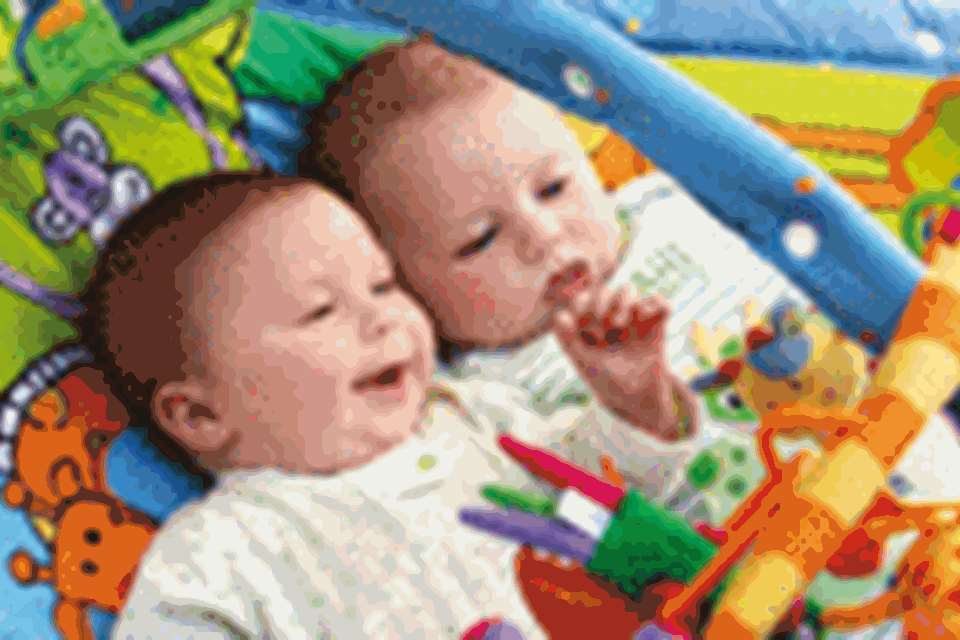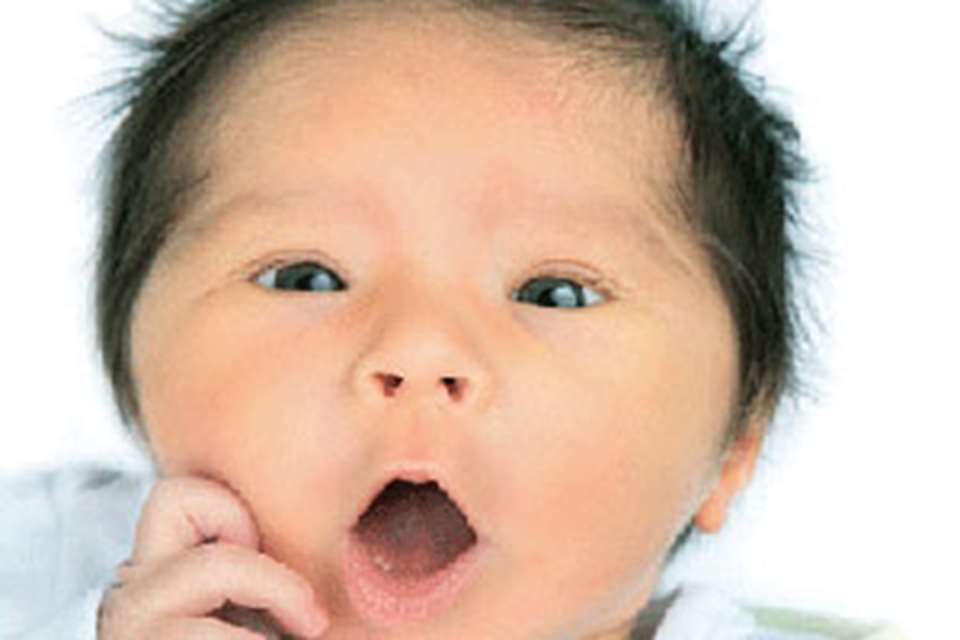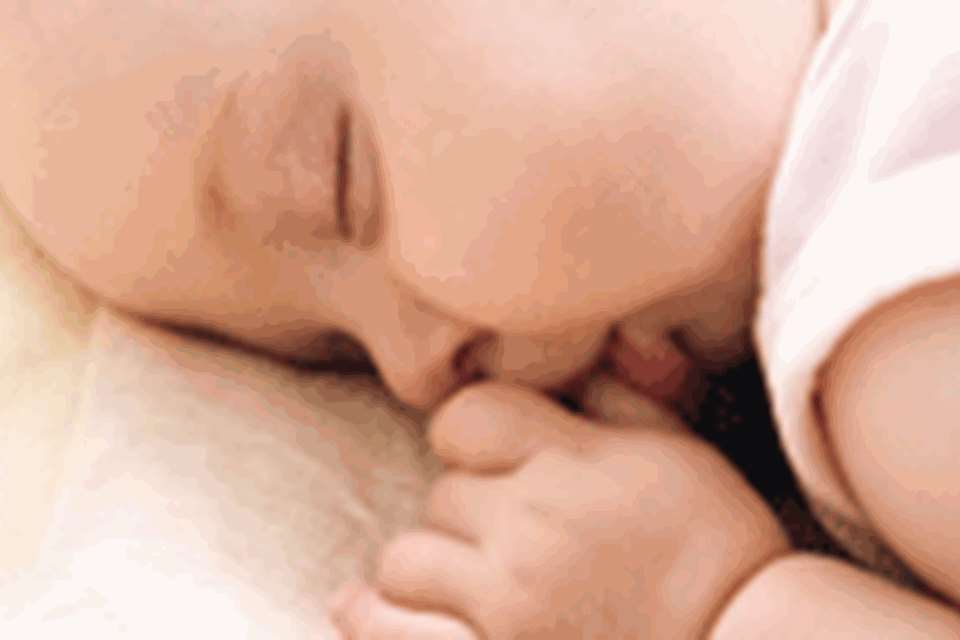EYFS Best Practice: All about ... neuroscience and the infant brain
David Whitebread and Lysandra Sinclaire-Harding
Monday, October 20, 2014
What can we learn from research on early brain development? David Whitebread and Lysandra Sinclaire-Harding debunk some of the 'neuromyths' and misdiagnoses doing the rounds and look at how neuroscience findings might inform practice in early childhood education.

There is currently a great deal of interest in neuroscience and what it might tell us about education, particularly in relation to the early years. Governments around the world are investing huge sums of money in understanding differences, disorders and diseases of the brain, and it is clear that there is huge potential for this new science to inform us about early brain development.
At the same time, however, the appetite for 'brain-based' curricula has led to the promulgation of a number of 'neuromyths' (critical stages, left and right brain learning) and the publication of a number of pseudo-scientific programmes (for example, Brain Gym), which arise from overgeneralisations or misinterpretations of the actual scientific findings so far established.
The now infamous and highly misleading use of brain scans of three-year-old children, labelled 'normal' and 'extreme neglect', on the cover of Graham Allen's Early Intervention report (www.gov.uk/government/uploads/system/uploads/attachment_data/file/ 284086/early-intervention-next-steps2.pdf) is another worrying example of the misuse of brain research to push particular political agendas - in this case, falsely suggesting that the brains of young children who suffer socio-economic deprivation or 'poor parenting' will be severely and permanently withered.
THE HISTORY AND NATURE OF NEUROSCIENCE
To begin with, it is important to recognise the limitations of current neuroscientific research. This is a relatively new science, which has exciting potential, but the human brain is enormously complex and we have a great deal still to learn. Recent developments in investigative techniques have enabled huge advances, but they are still only in their infancy and need to be refined much further.
Much of the early knowledge about the brain depended on the examination of patients with brain injuries arising from unfortunate accidents. For example, the first anatomical proof of the localisation of brain function came in the 1860s from a French physician named Paul Broca.
He studied the brains of patients who had lost the ability to speak after injury (lesion) to a part of the cortex known as the posterior inferior frontal gyrus (Broca, 1861). However, brain lesions are not always specific and analysing damaged brains has limited use for understanding healthy brains.
New tools and methods of non-invasive neuro-imagery techniques have proved invaluable in increasing our knowledge about the brain. There are two main techniques used in neuroscience research related to early childhood development and education. These are:
- electroencephalography (EEG)
- functional magnetic resonance imagery (fMRI).
EEG involves measuring the electrical activity in different regions of the brain. It provides very precise measurements of when a particular event occurs in the brain (within milliseconds), but is rather vague about where such events are located.
Conversely, fMRI provides very accurate measurement of the location of activity, but is imprecise regarding timings. It uses magnetism and radio frequency waves to identify where the haemoglobin in the blood flow is carrying oxygen (when it has a different resonance) to identify where the brain is currently most active.
Using these techniques, it has been established that early brain development involves brain functions being achieved at greater speeds and becoming more focused on specific brain regions. Learning consists of the establishment of increasing numbers of synaptic connections between neurons and the increasing efficiency or strength of these connections. Developing expertise in any particular skill or area of knowledge will result in increased capacity in the related brain region.
However, both these techniques can only tell us when an area of the brain is particularly active in relation to a particular experience or activity, and the activities or experiences we can investigate are only those we can manage while lying in an fMRI scanner or sitting very still with an EEG 'net' stuck to our scalp.
It is still a long way from explaining how the brain learns, or how we make sense of the world, read, make friends, or work out how to build a space rocket with a cereal packet and two toilet rolls.
MYTHS DEBUNKED AND MISDIAGNOSES EXPOSED
The limitations of current neuroscientific research have, however, not prevented the promulgation of a range of neuromyths and misdiagnoses resulting from oversimplifications and overgeneralisations of early research and often tentative findings.
The left brain/right brain idea is one example, which originates from a study on patients with epilepsy. Sperry (1961) noticed that the surgical separation of brain hemispheres affected a person's ability to perform certain tasks, and this led to speculation that processing language is handled by a specific hemisphere.
Subsequent research appeared to support the idea of hemispheric dominance (for example, Fink and Marshall, 1996) and this idea pervaded Western education for many years. A person who is 'left-brained' was said to be more logical, analytical and objective, while a person who is 'right-brained' more intuitive, thoughtful and subjective.
A year after their initial study, Fink and Marshall (1997) repeated their work and obtained opposite results. It has been subsequently established that both hemispheres work together in collaborative, complex ways.
In addition to premature generalisations of this kind from a small number of initial and tentative findings, there has also been a tendency, unfortunately, to over-diagnose conditions that have been shown to have some neurological basis (see Elliott and Grigorenko, 2014).
Many theories exist for the causes of dyslexia, some of which have established neurological causes. However, reading and writing difficulties arise from a whole range of genetic, neurological or social reasons.
Reading delays may not necessarily arise from difficulties with decoding text, and in such cases treatment for dyslexia may be ineffective. As such, parents and teachers should be encouraged to understand the specific needs of the individual and find a suitable, structured training programme to address those needs.
SUPPORTING 'GOOD PRACTICE'
Despite these reservations and what might be regarded as 'teething problems' of a young and fascinating science, it is clear that neuroscience has the potential to make important contributions to our understanding of early child development and early childhood education.
Current neuroscience supports much of developmental psychology and behavioural research, as well as confirming a number of insights that education professionals will recognise as the basis of existing 'good practice'. For example, neuroscientific research has supported the importance of children developing early secure emotional attachments, of children learning through play and the dangers of children being required to learn formal literacy skills too young.
Secure relationships
Secure family relationships that provide stimulation, interaction and nurture promote adaptation and growth in neural structures that respond to the needs and demands of everyday experience.
Where conditions are less than optimal, perhaps in situations of insecure maternal attachments, chronic stress or malnourishment, the development of the child may suffer. For example, chronic maternal stress during pregnancy and in infancy has been shown to threaten healthy brain development due to the toxic effect of stress hormones (Talge, Neal and Glover, 2007).
Playful environments
The beneficial effects of a stimulating, playful environment for young children's development as learners has also been supported. While there is little neuroscientific research on play in humans, the relationship between play and brain size has been compared in a number of different animal species (for example, Iwaniuk, Nelson and Pellis, 2001). Here, the research has found that animals with larger brains are more likely to engage in play than smaller brained animals, because more complex behaviour requires more neural tissue (Jerison, 1973).
Comparative studies have also shown that particular parts of the brain are enlarged in response to specific types of play. For example, the amygdala and hypothalamus of mice have been shown to increase in anatomical volume with social play, but not with object play (Pellis and Pellis, 2009).
Teaching literacy
There has also been support for the view that there are dangers in the formal teaching of literacy when children are too young, or too cognitively immature. One example is a study of five-year-olds in the USA who received formal literacy teaching in their first year of school.
In this instance, Yamada et al (2011) compared the effects of this teaching on typically developing children with those who were less mature and had more limited attention and self-regulatory skills, and who were assessed as being 'at risk' of reading difficulties.
After one semester of schooling, both groups of children were given letter recognition tasks while in an fMRI scanner. The on-track, typically developing children demonstrated activation in a region of the left angular gyrus, closely resembling neural networks activated in mature literate adults.
By contrast, the less mature children were seen to recruit compensatory neural tissue in frontal regions, even after they had received supplementary reading intervention.
It seems that these unexpected, and potentially less helpful, neural activations were due to the extra neural workload needed by these children to activate the attention, motivation and cognitive resources required for reading.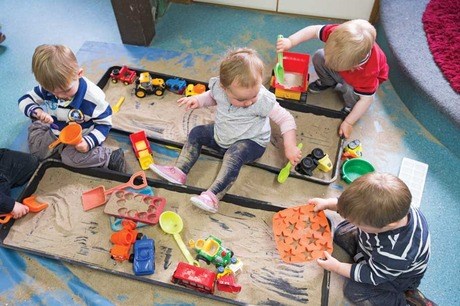
EARLY DIAGNOSIS AND TREATMENT
Perhaps the clearest contribution currently and potentially of neuroscience is in the diagnosis and treatment of developmental disorders. For example, neuroscientists have begun to reveal biological explanations for two such disorders increasingly identified in the early years: autistic spectrum disorder (ASD) and attention deficit and hyperactivity disorder (ADHD).
Early in their development, children begin to understand that the beliefs and intentions of others may be different from their own and are able to show empathy towards others. Baron-Cohen et al (1985) demonstrated that children with autism had particular difficulties with understanding the beliefs of others and suggested they lack a 'theory of mind'.
ASD is also associated with repetitive behaviours, obsessive desire for sameness, delayed language development and difficulties with planning. Genetic studies suggest that environmental triggers may collude with genetic vulnerability to increase the risk of ASD (Gerschwind and Levitt, 2007). Children with ASD are found to have anatomical differences in several areas of the brain (Branson, 2013).
All young children are naturally active, impulsive and easily excitable. Even excessive behaviours of this nature are usually outgrown. For some children, however, attention span is so short, activity level so high and impulse control so limited that learning and social development is severely impaired (Barkley, 2013).
In the UK, inattention and hyperactivity are now the most common problems for children in the early years classroom.
A number of genes have been associated with ADHD and as research continues it is likely that more will follow. For example, the dopamine receptor (DRD4) is found in 50-60 per cent of the ADHD population (Polanczyk et al, 2007).
Other contributory factors identified include foetal exposure to alcohol and nicotine, and complicated pregnancies or birthing. Research does not support popularly held views that ADHD arises from excessive sugar intake, food additives, excessive television viewing or poor parenting (Sciutto, Terjeson and Frank, 2000; Barkley, 2013), although such factors can contribute unhelpfully.
This type of research into the neurology of common disorders is likely to be helpful in aiding early diagnosis, and may also help in the development of effective treatments. For example, a recent brain imaging study in the USA showed that pre-schoolers who received eight weeks of attention-training exercises significantly improved their performance in tests of cognition, language and behaviour (Neville et al, 2013).
Children and parents were selected from low socio-economic status families and trained in activities of self-regulation that included vigilance, selective attention and task switching. Tasks became increasingly more challenging and similar to classroom activities. For example, one selective attention activity required children to focus their attention (colouring within the lines of detailed figures) while simultaneously suppressing distractions (ignoring other children balancing balloons in the air around them).
After training, positive changes were also observed in the neural regions activated during selective attention tasks. The long-term benefits have still to be ascertained, but are likely to emphasise the fundamental requirement to involve the parents in the child's training as a key component to enriching the environment of the child at risk of developmental deficits.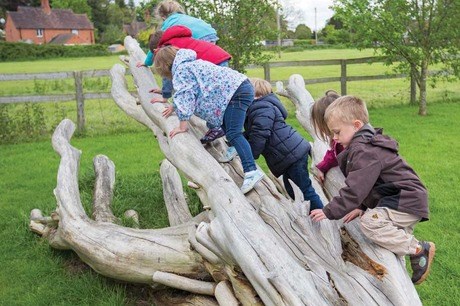
CONCLUSION
It is clear that early childhood educators need to be critically informed about neuroscience, both to avoid being seduced by apparently plausible but fallacious neuromyths and to be able to take advantage of the important evidence about early development that it is providing.
What is abundantly clear is that the human brain is distinctively attuned to respond to its environment. Neuroscience provides every reason for early years educators to believe that the environment they provide in the early years classroom can make a significant contribution to the healthy mental development of the children in their care.
David Whitebread is a senior lecturer in psychology and education at the Faculty of Education, University of Cambridge, and Lysandra Sinclaire-Harding is a PhD student of cognitive and behavioural neuroscience, Cambridge Neuroscience, University of Cambridge
REFERENCES
Barkley RA (2013). Taking Charge of ADHD: the complete, authoritative guide for parents. Guilford Publications.
Baron-Cohen S, Leslie AM and Frith U (1985). 'Does the autistic child have a "theory of mind"?' in Cognition.
Branson D (2013). 'Brain differences in children with autism spectrum disorders and subsequent impact on learning' in Early Childhood and Neuroscience - Links to Development and Learning (pp121-139). Springer, Netherlands.
Broca P (1861). 'Remarks on the Seat of the Faculty of Articulated Language, Following an Observation of Aphemia (Loss of Speech)' in Bulletin de la Societe Anatomique.
Elliott J and Grigorenko EL (2014). The Dyslexia Debate. Cambridge University Press.
Fink GR, Halligan PW, Marshall JC, Frith CD, Frackowiak RS and Dolan RJ (1996). 'Where in the brain does visual attention select the forest and the trees?' in Nature.
Fink GR, Marshall JC, Halligan PW, Frith CD, Frackowiak RS and Dolan RJ (1997). 'Hemispheric specialization for global and local processing: the effect of stimulus category' in Proceedings B.
Gerschwind DH and Levitt P (2007). 'Autism spectrum disorders: developmental disconnection syndromes' in Current Opinion in Neurobiology.
Iwaniuk AN, Nelson JE and Pellis SM (2001). 'Do big-brained animals play more? Comparative analyses of play and relative brain size in mammals' in Journal of Comparative Psychology.
Jerison H (1973). Evolution of the Brain and Intelligence. Elsevier.
Neville H J, Stevens C, Pakulak E, Bell TA, Fanning J, Klein S and Isbell E (2013). 'Family-based training program improves brain function, cognition, and behavior in lower socio-economic status preschoolers' in Proceedings of the National Academy of Sciences.
Pellis S and Pellis V (2009). The Playful Brain: venturing to the limits of neuroscience. Oneworld.
Polanczyk G, de Lima MS, Horta BL, et al (2007). 'The worldwide prevalence of ADHD: a systematic review and metaregression analysis' in American Journal of Psychiatry.
Sciutto MJ, Terjesen MD and Frank ASB (2000). 'Teachers' knowledge and misperceptions of attention deficit/hyperactivity disorder' in Psychology in the Schools.
Talge NM, Neal C and Glover V (2007). 'Antenatal maternal stress and long-term effects on child neurodevelopment: how and why?' in Journal of Child Psychology and Psychiatry.
Thomas R, Mitchell GK and Batstra L (2013). 'Attention-deficit/hyperactivity disorder: are we helping or harming?' in British Medical Journal.
Yamada Y, Stevens C, Dow M, Harn BA, Chard DJ and Neville HJ (2011). 'Emergence of the neural network for reading in five-year-old beginning readers of different levels of pre-literacy abilities: an fMRI study' in NeuroImage.


